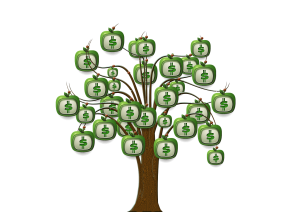How do you evaluate success of your business? The income statement most of the time receives more attention than the cash flow statement. By giving the cash flow statement a little more consideration and tweaking seven key financial levers, a company can grow considerably faster using its own internally generated cash than by raising or borrowing external capital.
What is more important, profit or cash?
If you’re a growing business, it’s cash. A healthy profit and loss statement can mask pending cash-flow issues that will only get worse as the business continues to scale. It is therefore imperative that you understand your business from the perspective of bankers and investors.
The only tangible aspect of a business’s performance is cash. The profit of a business can be manipulated to provide a specific outcome. Most of the parts of a balance sheet are an opinion; you can amend valuations to produce the desired result.
There are only two aspects of the financial statements that are facts, i.e., cash and debt balances. Banks are cognizant of this and use these numbers to determine the performance of your business. To a banker, cash flow has a specific value. It is an indicator of management competence.
And that competence begins with the business owner understanding the information to stay in control of their business. Cash flow indicates the change in cash and debt balances across a given period.
Measuring Financial Success
How do you evaluate success of your business? To measure financial success, we will focus on two parameters

- Cash flow
- Returns
Return on assets is arguably the most useful ratio for measuring management effectiveness. The ratio brings into consideration both the income statement of the business (which provides the EBIT = earnings before interest and taxes) and the balance sheet.
Earnings Before Interest & Tax/net operating assets = return on net assets
Operational Efficiency and Sales Effectiveness
The beauty of the DuPont Formula is that it measures both the operational efficiency and the sales effectiveness of the company.
- The Earnings Before Interest & Tax/revenue ratio is a measure of income statement efficiency (i.e., how much profit is made from every $1 of sales). This translates into a measure of how effectively you’re operating and tells you if you are squeezing the most profit from every dollar of revenue.
- In turn, the Revenue/ Net operating ratio is a measure of balance sheet effectiveness known as asset turnover. It is also a key indicator of sales effectiveness – telling you how much revenue the business can generate from the least number of assets or investments.
As these equations show, business leaders who ignore this information are missing a major determinant of how successful they are and where opportunities for improvement might be.
Minimum Return on Assets
To keep it simple, midsize businesses should target at a minimum 30% return on net assets. If you are not achieving this, you should consider whether the EBIT you are producing from revenue generated is sufficient, or whether the business is producing enough revenue for the assets being deployed. If not, your investors might be better off investing their money elsewhere.
Return on Net Assets
As a business owner, you should also consider that equity is the most expensive source of funding and that it is usually cheaper to source debt financing. Your return is a measure of your strategy. If your return is not at the appropriate level, you need strategies that focus on performance where you are increasing EBIT faster than you are growing net assets and, consequently, are growing returns.
The 4 Financial Drivers
It is possible to measure success using ratios that measure returns, yet as a manager, you can’t change returns directly. You need to modify aspects of the business – the drivers, if you will, in order to change your returns. Here are 4 financial drivers, and they inform the bank and investors.
1|Profitability – The first place to focus on improving cash is increasing profitability
2| Working Capital Management – Working capital is the amount of cash that your business requires to trade and is generally consumed by two major current assets: your debtors (Accounts Receivable) and your inventory. Your trade creditors will fund some of this, so we always subtract Accounts Payable (creditor balance) from the other two figures when calculating working capital requirements. Working capital items are measured in days to represent your current trading terms and requirements.
3| Noncurrent Asset Management – Together, this key driver measures the rest of a balance sheet’s performance. The results are propelled by success in managing and improving the measures identified in drivers no 1 and 2.
4| Cash Flow/Funding – This driver helps predict the likelihood that you’ll be able to pay bankers and investors back.
How To Adjust The 4 Drivers Of Returns
Managers adjust the 4 drivers by tweaking the 7 main financial levers available to them to improve cash and returns in the business. There are benefits to cash if either a 1% or one-day change is made to each of these levers.
- Price: Increasing the price of your goods and services increases your profit margin.
- Volume: you can sell more items while maintaining the same price.
- Cost of Goods Sold (COGS)/direct costs: you can reduce the price you pay for your raw materials and direct labor.
- Operating expenses: find ways to reduce your operating costs.
- Accounts receivable: put in place measures to collect from your debtors faster.
- Inventory/work in progress; you can reduce the amount of stock you have on hand.
- Accounts payable: Prolong the credit period/payment terms with the creditors.
How do you evaluate success of your business? In reality, it is not feasible to improve all the drivers at the same time. This is where management should start to set specific goals: combinations and increments of the 1% and one-day changes that are actually achievable.

